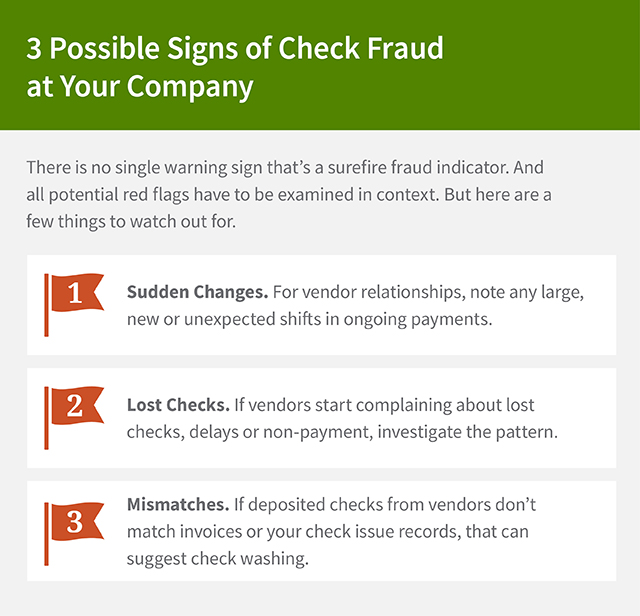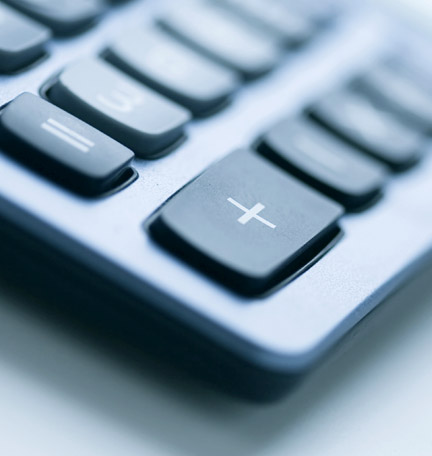How to prevent check fraud from affecting your business
Check fraud is a common scheme affecting businesses. Take these steps if your company has been targeted.
Paper checks may seem old school, but they are still a common payment method for many businesses—making them a compelling target for criminals.
In this digital age, you might think check fraud would be a thing of the past, but incidents of so-called check washing, mailbox fishing (literally pulling checks out of mailboxes) and other forms of check fraud are skyrocketing. In fact, the number of suspicious activity reports involving potential check fraud nearly doubled between 2021 and 2022 to over 680,000, according to data from the Financial Crimes Enforcement Network (FinCEN).
“There are a lot of companies out there who continue to use checks as a part of their business operations, and because of that, fraud occurs,” says Randy Wilborn, Senior Treasury Management Product Manager at Regions Bank. “We see check fraud very often.”
Business checks are often targeted because business accounts generally hold more funds than personal accounts, and it can take longer for the crime to come to light. If you’ve discovered that your business has been impacted by check fraud, it’s important to act quickly and carefully. Here’s how to report check fraud and take steps to protect against it.
How Does Check Fraud Occur?
Check fraud can happen in a variety of ways. Mail theft is one common way for criminals to obtain checks for fraudulent purposes. Working alone or via an organized criminal network, these criminals may steal outgoing checks from United States Postal Service facilities, blue collection boxes or private mailboxes located in buildings or homes or incoming checks from the offices where they are delivered. “Whenever someone writes a check and puts it in the mail, it’s an opportunity for a criminal to take advantage of the situation,” Wilborn says.
Once stolen, the checks may be altered or used to create counterfeit checks, which are then deposited—typically into a bogus account from which the funds are withdrawn before the fraud is ever detected.
- Altered Checks: Criminals may take a check and change the recipient's name and/or the amount on a check, often using a process sometimes called “check washing,” which uses chemicals to remove the original information from the check.
- Counterfeit Checks: Criminals may use a stolen check to create fraudulent checks. Using the information on the stolen check—including the authorized signature, account number, routing and transit numbers—they can create counterfeit checks that look like they were issued by the same company that issued the original check. Today’s technology has made it easier than ever to create realistic-looking fraudulent checks—even with a home printer.
“Once that information is in the hands of someone who doesn’t have good intentions, there’s an opportunity for fraud to take place,” says Wilborn.

Fraud by Employees
In some instances, the check fraud may be committed by an employee. Even a well-trusted, long-time employee who has access to the company’s accounts may turn to check fraud after a tragedy or financial crisis occurs in their personal life.
“Normally, it starts out as a smaller amount,” says Wilborn. “If they’re able to carry out the fraud and it goes undetected, they’ll eventually do it again and again.” Unfortunately, if a company doesn't have solid internal controls in place to review outgoing and incoming payments, internal check fraud can be hard to detect—and it may go on for a while.
Investigating Check Fraud
If your company has been affected by check fraud, it’s important to act quickly, carefully and with discretion. First, check your accounts to make sure other instances of fraud haven’t occurred. If you find other discrepancies, make sure to keep a record of all transactions.
As soon as possible, report the fraud to your banker. “The sooner you tell the banker, the better the bank can help stop the fraud and attempt to recover the funds to prevent the company from experiencing a loss,” says Wilborn. Also, the agreement for your deposit account may require you to report check fraud within a certain time period.
Depending on the scale of the loss, you may also wish to contact local police. In some cases, financial institutions—like Regions—will assist the local law enforcement in its investigation. To help with the investigation, you’ll need to identify the recipient’s name and the amount on the original check. You may want to obtain an image of the fraudulent check from your bank and provide it to law enforcement.
Because it’s possible an employee may have been involved in the fraud, it’s important to limit who you tell about the incident. Do not confront, question or alert any suspected perpetrators—doing so may ultimately impede the success of the investigation.
How to Prevent Check Fraud
Implementing or correcting processes in your organization can help protect your company against check fraud. Take a hard look at your internal processes and identify areas for improvement. Consider starting with these steps:
- Review Transactions. Use online banking to review daily transaction activity and check for irregularities. Doing so can help your company identify fraud quickly and potentially recover funds if fraud has occurred.
- Add Checks and Balances. Make sure that your employees who are authorized to sign checks are not the same people who reconcile the accounts. You may consider instituting two-person authorization on outgoing checks and payments.
- Audit. Conduct surprise account audits on a periodic basis.
- Go Digital. Opt for electronic payments over physical checks whenever possible.
- Avoid Using Mailboxes. Mailing checks inside the post office (rather than leaving them in mailboxes) offers greater protection against the risk of stolen checks.
Finally, know that awareness can be one of the best lines of defense against fraud. According to Wilborn, it’s crucial to make sure your employees undergo a fraud training program. “Education for everybody at the company should be a top priority,” he says. “All employees need to be aware of the company’s processes and make sure there are controls and regular reviews. It will help protect the company and the employees.”
In addition to your internal processes, take advantage of external procedures or treasury management products at your bank that can help you prevent payment fraud. For example, Regions Positive Pay service compares and verifies each check your business issues to the checks presented for payment against your account. The offering verifies the amount and, as an option, the recipient’s name. Any discrepancies will be reported to you for review.
Even if check fraud has already affected your business, taking time to improve your processes and help combat check fraud can help protect your company from a future loss.
For more tips on how to protect your business against fraud, visit regions.com/fraudprevention.
Three Things to Do
- Review these best practices for preventing paper-based fraud.
- Use technology to detect and help prevent check fraud. For example, consider Regions Positive Pay.
- Consider whether you also need to protect against fraudulent ACH debits, which sometimes are called electronic checks. For example, explore Regions ACH Alert.






